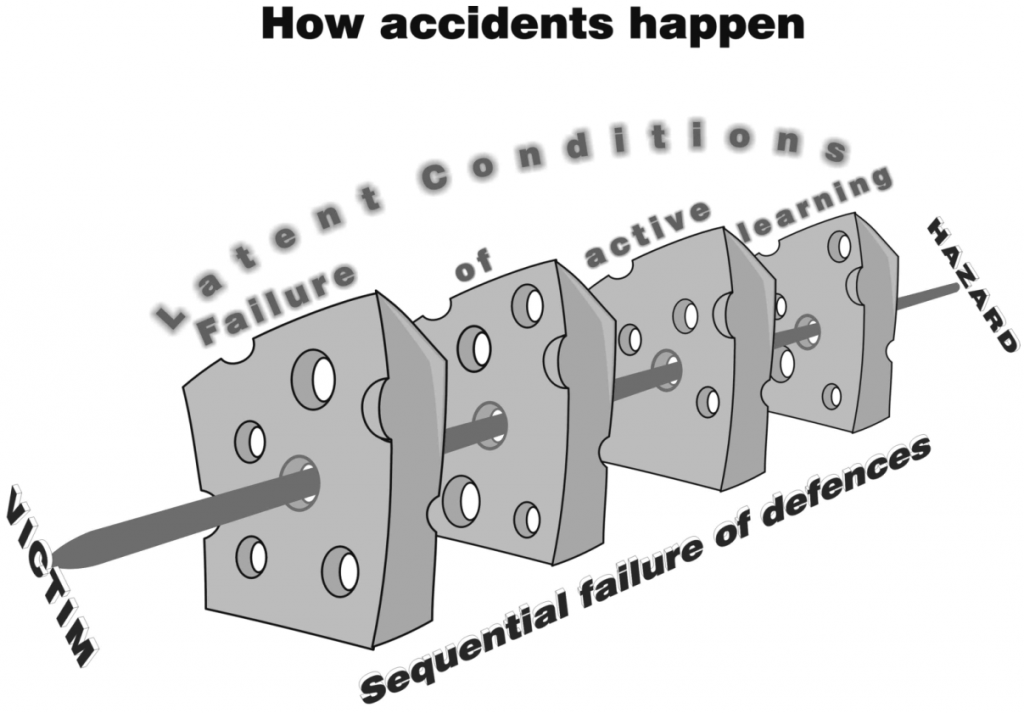Justin Larouzée publishes an article entitled “Good and bad reasons: the Swiss cheese model and its critics”, co-authored by Jean-Christophe Le Coze (INERIS). Free access on Safety Science’s website. This article provides a historical and critical account of James Reason’s contribution to safety research with a focus on the Swiss cheese model (SCM), its developments and its critics.

This article shows that the SCM is a product of specific historical circumstances, has been developed over a ten years period following several steps, and has benefited of the direct influence of John Wreathall. Reason took part in intense intellectual debates and publications in the 1980s during which many ideas circulated among researchers, featuring authors as influent as Donald Norman, Jens Rasmussen, Charles Perrow or Barry Turner. The 1980s and 1990s were highly productive from a safety research point of view (e.g. human error, incubation models, high reliability organisation, safety culture) and Reason has considerably influenced it with a rich production of models, based on both research and industrial projects.
Historical perspectives offer interesting insights because they can question research, the conditions of its production, its relevance and, sometimes, its success, as for the SCM. But, because of this success, critics have vividly argued about some of the SCM limitations, including its simplistic vision of accidents and its degree of generality. Against these positions, the article develops a ‘critique of the criticism’, and the article concludes that the SCM remains a relevant model because of its systemic foundations and its sustained use in high-risk industries; despite of course, the need to keep imagining alternatives based on the mix of collective empirical, practical and graphical research which was in the SCM background.




